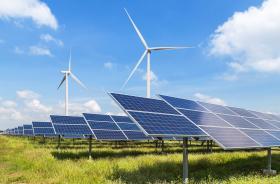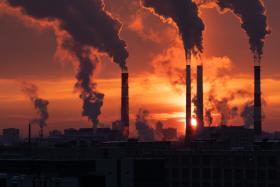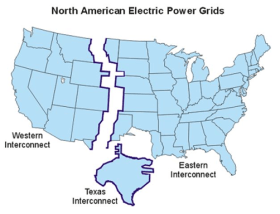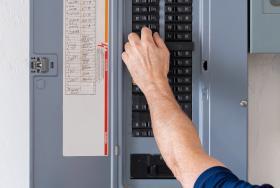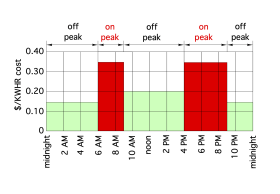The previous section discussed the fundamentals of heat pump technology. This section discusses how HPWHs can be an integral part of a broader energy transition.
Current Replacement Market
According to the Advanced Water Heater Initiative (AWHI), “The two major markets for HPWHs include single family and multifamily residences, which currently house over 118 million water heaters. More than 25 million of those systems are over 10 years old and will need to be replaced in the next five years, providing an opportunity to reduce the carbon footprint of water heating substantially.”
A 2022 report by the U.S. International Trade Commission stated, “The U.S. HPWH market doubled in the last five years, with apparent sales of Energy Star-certified units increasing from 52,000 units in 2016 to 104,000 in 2020. However, HPWHs account for a relatively small share of the water heater market, with 2020 sales accounting for only 2 percent of the overall market.” While the overall U.S. market share is low, some cities and states will see rapid HPWH growth. As an example, the Washington State Building Code is pursuing heat pumps being required for space heating and water heating in single-family and multi-family new construction projects starting in late October 2023.
Energy-Efficiency Improvement Potential
The U.S. Energy Information Administration states that water heaters can account for 19% to 32% of a homeowner’s utility bill. Commercially, the percentage of the utility bill will vary drastically, based on the tenants’ water-demand characteristics. The financial impact of water heating is significant enough to justify a deeper evaluation of current water heating technology. As of 2020, 59 million U.S. homes used natural gas for water heating and 57 million used electricity. The energy savings potential for modernizing domestic hot water systems is enormous.
Climate Change Impacts
An emerging, important factor in the water heater selection process relates to the indirect effects of the energy source used. In the past, water heaters would often be selected based on the most economical, local fuel source. If the building is served by a utility offering low-cost electricity, an electric-resistance water heater would likely be the best fit. If the customer is hundreds of miles away from the closest natural gas pipeline, locally stored propane could be a good fit. However, energy market prices are no longer the only driver for product selection.
A reason HPWHs are favored in climate change mitigation scenarios is that they allow for integration of a bigger mix of renewable energy sources from the local and regional electrical utility grids. If water is heated with gas, the regional source of fuel in the pipeline may change, but the inputs are always the same combustible hydrocarbons. If the source energy for water heating is electricity, it could flow from any mix of fossil-fuel-based or renewable sources across the region.
Decarbonization is a motivating factor in a growing number of jurisdictions across the world. It is defined by the National Renewable Energy Laboratory as: “no net climate impact resulting from carbon or other greenhouse gasses.” To slow the trend of human-caused climate change, some jurisdictions have incentivized the movement away from machines that produce point-source pollution by burning fossil fuels to machines that do not use these fuel types.
HPWHs help with city and building-level decarbonization efforts, as these machines do not burn fossil fuels within the envelope of the building. They meet the local criteria for decarbonization. However, the decarbonization puzzle is more complex than a single building or city. A single decarbonized building may just be shifting the use of fossil fuels further away, while also adding electrical transmission losses between the power plant and building.
In order to advance a widespread decarbonization effort, the electricity supplied by renewable energy sources must provide a major contribution. Merely switching from gas water heaters to HPWHs will not decarbonize the grid. For decarbonization efforts to be meaningful, the electric utilities must incorporate a larger portion of renewable energy power plants into the grid. Often, a regional electric grid will still have a mix of fossil fuels as part of the overall energy-generation network. The regional-scale decarbonization of the electrical grid is a much bigger topic than can be addressed in this journal.
In Canada, the adoption of decarbonized water heaters is on a faster trajectory. Across Canada, carbon emissions are taxed at an increasing rate, per ton of CO2 emissions. Vancouver is an example of a city that is phasing out natural gas service to new buildings. Essentially, the status quo of consuming fossil fuel-based energy for DHW will be increasingly expensive. The policies currently in effect, or on the horizon, will require consumers to either pay the carbon tax or pay to install more energy-efficient water heating systems.
From a policy perspective, there is a parallel in the U.S. automotive industry. Federal and state energy-efficiency standards are pushing car and truck manufacturers to increase the average miles-per-gallon of gasoline efficiency in their fleets. Most major car companies are phasing in hybrid gas/electric and all electric automobiles quickly, as a way to comply with these benchmarks.
While energy policy is likely not the major decision point for automobile buyers, increased competition in the electric car segment has led to an increased number of less-expensive options for electric vehicles, spurring competition. According to the Edison Electric Institute, in the U.S., “It took eight years to sell 1 million electric vehicles and fewer than three years to sell the next million.” Time will tell if policy-driven decisions will push HPWHs to a similar adoption trajectory.
Not all jurisdictions are pushing for decarbonization. According to the American Council for an Energy-Efficient Economy, in some U.S. States, consumers are discouraged from disconnecting their current gas service. The rationale is often related to concerns that shifting gas water heaters to electric would increase the potential for brownouts within an already overloaded electrical grid. As an example, a utility company may be forbidden from providing financial incentives to customers who want to disconnect gas service and switch to electric-resistance heating, cooling and water heating technologies unless specific criteria are met.
There are three energy grids in the United States: western states, eastern states and Texas. The eastern and western grids are able to share electricity regionally to better avoid brownouts and incorporate a large mix of power plant technologies. Texas is an islanded electrical grid. While the Texas interconnect is independent of the other states and is able to determine the ideal power plant mix, there are significant strides to be taken at the grid level to accommodate HPWHs and electric cars if customer demand moves in that direction.
For decarbonization to be an effective long-term solution for water heating it must dispel the concern that it will overwhelm the grid. Modernization of the electrical grid is an important step to reduce waste and improve reliability. Best practices in domestic hot water delivery will help deliver an energy-efficient and reliable future.
Financial Incentives
In the United States as of January 2023, ENERGY STAR-eligible water heaters purchased and installed between 2023 and 2032 are eligible for a tax credit of 30% of the installation cost, up to $2,000. Local governments and utility companies may offer additional incentives. Verifying eligibility for financial incentives is an important factor for HPWH adoption and may help offset some of the costs associated with a changeout of a water heater. Depending on utility costs and usage rates, HPWHs might still have the lowest lifetime costs without rebates. DSIREUSA.org is a zip code-based search engine to help find current rebate information.
Electrical Service Upgrades
New Buildings Institute research found: “A typical house that is built before the last 10 years will mostly have an electric service panel size of 100-150 Amps. More than 100 million households in the U.S. are in this category. Smaller electric service panel sizes and amperage services worked fine with fossil fuel-fired appliances. That may not be the case as we switch the market to electrification of the buildings.”
Upgrading the electrical service to buildings that are moving to HPWHs may be a prerequisite to installation and can be costly. Product selection, related to input voltage requirements, and water storage temperature set points are two variables that can potentially reduce the electrical panel upgrade requirement. These are discussed later in this journal.
Equipment Manufacturer Changes and Requirements
The U.S. Department of Energy’s ENERGY STAR® program administers water heater energy-efficiency standards. Specific ENERGY STAR certification is required for products to qualify them for rebates or by the local authority having jurisdiction for use in new construction. There is enormous leverage to steer the water heating market based on these standards. As an example, “low nitrous oxide (NOx)” emissions were a benchmark for gas appliances. Subsequently, “ultra-low NOx” emission requirements were enacted. In the future, ENERGY STAR could adopt “zero NOx” requirements, which would effectively exclude all gas appliances from receiving the certification. In the current trajectory, water heater manufacturers are working diligently to ensure they have a wide range of HPWH product offerings to stay ahead of the curve.
Electrical Grid Integration and Demand Response
Electrical grid brownouts are often cited as a discouraging factor for a transition to HPWHs. A brownout is a period of time where the demand for electricity exceeds grid capacity and the voltage to end-users drops, often below the minimum threshold for proper, consistent equipment performance. A blackout is where grid voltage in an area drops to zero. If all of the gas water heaters in North America were rapidly replaced with electric heat pumps, there is a high likelihood that the grid would not be able to handle the increased electrical demand, resulting in brownouts during periods of high demand.
Similar to charging an electric car overnight, HPWHs can integrate with the grid and avoid heating water during peak electrical demand periods. In many regions of the world, demand for electricity is high in the morning and throughout the late afternoon and evening. These are the times when people are getting ready for work and arriving back home.
In the conceptual example shown in Figure 3-5, a utility company charges different prices for electricity depending on the time of day. Essentially, if customers can avoid using excess electricity during peak periods, they will pay less for the same amount of energy. Scheduling electrical appliances to start, operate or charge during the non-peak times is possible and advisable with current technologies and consumer behavior changes.
Specific to water heating, industry stakeholders are developing a load-shifting communication protocol originally called EcoPort, now the CTA 2045 technical specification. This is a unified communication technology that allows utility companies to react to demand trends by sending a signal to CTA 2045-enabled water heaters, thus shedding some of the electrical load for a period.
As an alternative, non-grid-connected option, water heaters can be scheduled with different setpoints during the day to reduce the amount of water heating cycles during known peak times of day. Point-of-distribution mixing valves can be used to ensure a consistent delivery temperature to occupants in systems where the storage temperature fluctuates, as detailed in the next section.
The HPWH industry is quickly evolving. Globally, the demand for more energy-efficient methods for heating domestic water is rising. For a variety of reasons, HPWHs will gain market share in the years to come. The next section will describe the general evaluation process to determine how to best utilize HPWH technologies.


